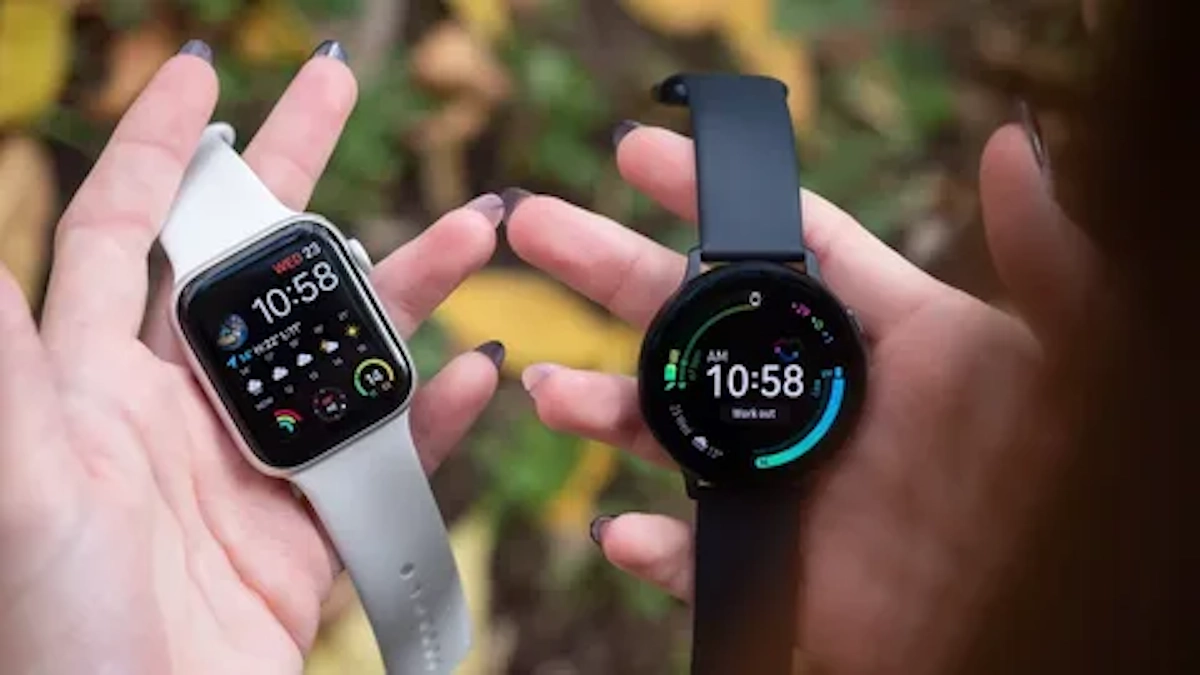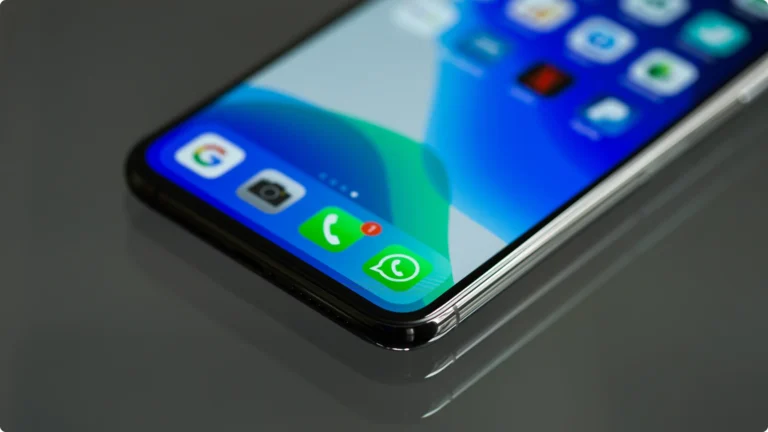Ever wondered what’s going on under the hood of your smartwatch when it tells you you've hit 10,000 steps—or why it buzzes like an over-caffeinated bee when your heart rate spikes during a meeting? You're not alone. Most folks wear these sleek little wrist gadgets every day without stopping to think about how they actually …
How Smartwatches Track Your Steps Heartbeat and More

Ever wondered what’s going on under the hood of your smartwatch when it tells you you’ve hit 10,000 steps—or why it buzzes like an over-caffeinated bee when your heart rate spikes during a meeting? You’re not alone. Most folks wear these sleek little wrist gadgets every day without stopping to think about how they actually work.
Here’s the truth: smartwatches are a compact fusion of high-tech sensors, AI-powered algorithms, and clever software tucked into a frame no bigger than your old-school digital watch. But unlike those glorified calendars from the ’90s, today’s smartwatches do a whole lot more than tick time. They help you monitor your health, control your smart home, and even stream music while jogging.
The secret sauce? A blend of sensor-driven technology and integration with cutting-edge software and web frameworks. That’s how they turn raw data (like the tilt of your wrist or your pulse) into real-time feedback that helps you live smarter.
So, how exactly do they track, process, and interpret all that information? How does a smart watch work when paired with advanced software that thinks before you even finish a lap around the block?
Let’s break it down brick by digital brick.
Introduction To Smart Watches And Integrated Technology
Smartwatches used to be glorified step counters. Back in the day, you’d strap one on, walk around, and hope it gave you a number that made you feel fit.
Now? These things are practically mini health labs, navigation tools, productivity managers, and messaging hubs—all strapped to your arm.
This transformation didn’t happen overnight. The shift from basic fitness bands to today’s multi-functional smart wearables is driven by one game-changing principle: integration. Connecting smart watch hardware (those tiny sensors and chips) with robust software and modern web development frameworks allowed the feature list to explode.
Think about it. Without software frameworks like Flutter or React Native, developers wouldn’t be able to build cross-platform apps that stream real-time data from your wrist to the cloud and back again. That kind of insight used to cost a hospital visit. Now it’s packed into a gadget that syncs with your smartphone and adjusts your goals on the fly.
It all raises one key question: how does a smartwatch take all those tiny vibrations, electrical impulses, and twisty wrist movements—and turn them into practical, life-enhancing features?
Time to jump into the sensor jungle.
Sensor-Driven Technology In Modern Smart Watches
What makes smartwatches “smart” isn’t just the sleek screen or fancy watch faces you can swap on a whim. It’s the hardcore set of sensors hiding beneath the glass—and what they do with every flick, beat, or tap you give them.
Inside, you’ll find a powerhouse combo of motion trackers and biosensors:
- Accelerometers: These measure how fast and in what direction you move. They’re the unsung heroes behind your daily step count.
- Gyroscopes: They sense rotational movements. Think yoga poses, biking, or wrist twists to wake the display.
- Optical heart rate sensors: Built using photoplethysmography (PPG), they flash light into your skin and track the way your blood absorbs it, which reveals your pulse.
- Environmental sensors: Some models even include barometers, thermometers, or air pressure monitors for hikers or outdoor athletes needing real-world feedback.
Here’s where it gets ridiculously cool: these sensors make real-time health monitoring possible.
Picture this—your smartwatch is scanning your heart rate every few seconds. If something’s off, like an irregular rhythm that could spell atrial fibrillation, it flags it. Devices like the Apple Watch or the FDA-cleared Empatica Embrace2 dive even deeper, monitoring electrodermal activity to spot early signs of seizures or stress overload. ([en.wikipedia.org](https://en.wikipedia.org/wiki/Empatica?utm_source=openai))
Sensors track your sleep stages, letting you analyze quality vs. quantity. They detect micro-gestures—little movements so minor you wouldn’t even notice—that let wearables judge things like stress levels, exercise form, and posture.
Now, just spitting out sensor numbers wouldn’t be that helpful. That’s why modern smartwatches rely on some serious brains behind the scenes.
Data Processing Algorithms Enhancing Functionality
All those sensor stats? They’d be gibberish without fast, smart data processing—and we’re not talking about tech wizardry you need a degree to use. We’re talking real-time insights served up while you’re mid-sprint or crushing a deadline.
Smartwatches use built-in AI and machine learning algorithms to make sense of the chaos. These algorithms are like personal data translators. They figure out whether a heartbeat spike is due to anxiety, exercise, or just too much caffeine.
There’s an actual case where smartwatch ECG sensors helped detect dangerous heart arrhythmias, prompting users to get medical attention early. That level of analysis in something barely thicker than your thumbnail is next-level.
These algorithms aren’t working alone. They’re part of a bigger system secured by encrypted channels that protect your biometric data during transfer to apps or cloud services. Yep, your smartwatch isn’t just smart—it’s got street smarts when it comes to digital safety.
And to keep things running smooth as butter, firmware and software updates are constantly being pushed. These tweak how sensors behave, fine-tune the AI models, and improve everything from battery life to signal accuracy.
| Component | Function | Tech Involved |
|---|---|---|
| Heart Rate Sensor | Tracks pulse using optical light | Photoplethysmography |
| Accelerometer | Measures motion & steps | MEMS technology |
| ECG Monitor | Detects heart rhythm changes | Biosignal processing algorithms |
| Gyroscope | Tracks wrist rotation & orientation | MEMS-based angular sensors |
Intelligent Wearable Technology: Seamlessly Connected Devices
This is where it all clicks together.
Smartwatches aren’t isolated gadgets anymore. They’re hubs connecting your body to your digital world. You want to turn off your smart lights without leaving bed? Done. Need to reply to a text without fumbling for your phone? Easy.
These wearables talk to your other devices. Your thermostat, your audio system, your car even—smartwatch commands are becoming the new remote control standard.
Thanks to advances in wearable technology innovations like 5G and low-latency connections, syncing across devices happens almost instantly. Suddenly, fitness data doesn’t just live on your watch—it updates in your health app, shows up on your doctor’s dashboard during a telehealth appointment, and even guides your buddy’s virtual workout leaderboard in real time.
And with the rise of connected smart devices and intelligent wearable technology, expect even deeper integrations—like mood-activated playlists that adapt based on real-time biometrics.
Point is, smartwatches aren’t just wearable accessories—they’re becoming an extension of our lifestyles, seamlessly blending software, sensors, and connectivity into everything we do.
Wearable Software Integration with Web Development Frameworks
Ever tried to open a smartwatch app that felt clunky or just… off? It’s a frustrating reminder that even cutting-edge hardware is only as useful as the software driving it. This is where modern web development frameworks like Flutter and React Native step in.
These frameworks make it easier for developers to build cross-platform apps—apps that work smoothly on both Android and iOS devices, including wearables. Instead of having to write multiple versions of the same app, developers write once and deploy everywhere. That’s a game changer when dealing with the wide variety of screen sizes and interfaces you find in wearable tech.
An intuitive interface is key for wearables. Nobody wants to fumble with tiny icons or navigate endless menus during a jog. With deeper software compatibility, developers can tailor smartwatch apps to be smarter, simpler, and more responsive.
Picture this: you’re in the middle of a workout. Your smartwatch is tracking your vitals, counting reps, and syncing performance data in real time—with zero lag. That’s the power of integrating wearable software with cloud-based solutions.
Using services like Firebase or AWS Amplify, developers can stream sensor data from smartwatches directly to the cloud. Interactive fitness apps use these connections in creative ways—generating live coaching tips, notifying users about overtraining, or adjusting diets after noting patterns in your activity data.
This kind of technology isn’t locked in a lab somewhere. Real-world apps already connect to platforms like Google Fit, Apple Health, and Fitbit via web-based APIs. These APIs act as the glue between devices and third-party services, creating a seamless, personalized ecosystem.
On top of everything, adaptive interfaces are getting a boost. These are smarter UIs that respond to user behavior and preferences. Scroll speed adjusts based on your gestures. Displays shift contrast based on lighting. The future of smartwatch software is one where the UI learns from how you interact—and evolves with you.
Real-Time Wearable Analytics and Their Applications
So how does a smartwatch work to tell you so much about yourself? It all comes down to real-time analytics. These wearables pull sensor data from your wrist and, using algorithms, turn it into meaningful feedback. That’s where the magic happens.
Imagine running a marathon. Your smartwatch isn’t just tracking distance. It’s calculating heart rate variability, monitoring hydration levels, and even assessing fatigue. All of this happens in real time, and you get actionable insights before you’re even aware of the issue.
Healthcare has been one of the biggest beneficiaries here. Devices like the FDA-approved Empatica Embrace2 don’t just monitor—they actively detect risks like epileptic seizures by analyzing electrodermal activity and heart rate. In chronic disease management, wearables are used to keep tabs on conditions like atrial fibrillation or sleep apnea—often identifying signs before symptoms appear.
During the height of the COVID-19 pandemic, smartwatches played a silent hero role. Hospitals used them to monitor patients remotely, tracking respiration patterns and oxygen saturation in real time. This kind of early warning system gave doctors extra time to intervene.
But it’s not all stethoscopes and hospital beds. Smartwatches are also reshaping consumer habits. Here’s how:
- Fitness recommendations: Based on activity, heart rate, and calorie burn, watches suggest workouts tailored to your goals.
- Wellness check-ins: Devices offer reminders to hydrate, breathe, or stand based on inactivity patterns and stress detection.
In short, real-time analytics turns a passive device into a dynamic tool—one that helps you move better, live smarter, and understand your body’s feedback loop in a way that once seemed impossible.
Innovations in Wearable Technology Driving Search Engines and Tech Education
Ever wonder how search engines seem to “guess” what you need even before you type it in? Wearables play a surprise role here. Your smartwatch feeds data—like location, sleep cycles, and daily routines—that can be used to fine-tune search engine results.
This isn’t about selling your secrets. It’s about smarter tools. If your wearable shows you run every morning, a search engine may start bumping fitness-related articles or nearby trail recommendations to the top. Personalized, timely, and context-aware—that’s the new standard.
Beyond algorithms and autocomplete bars, wearables are quietly transforming classrooms too. Schools are starting to test smartwatches in education. Think stress monitoring during exams or attendance tracking through biosensors. It’s not Big Brother; it’s real-time support for students who might be struggling.
STEM educators are especially excited. Wearables help students apply concepts in biology, physics, and computer science through hands-on learning. Imagine collecting your own health data, coding with Python to analyze trends, then visualizing results—all using a device you wear on your wrist.
And as the workforce leans hard on tech, students who grow up analyzing live wearable data are better prepped for jobs in data science, healthcare IT, and digital product design. They’re not just learning tech—they’re living it.
Smart Watch Firmware Integration and Software Performance Enhancement
Dig a little deeper into how a smartwatch works, and you’ll find a piece of unsung hero tech: firmware. It’s the hidden software layer living between the hardware and the apps, and it does some heavy lifting.
Firmware updates aren’t just bug fixes. They can overhaul how a smartwatch handles tasks, including memory allocation, background app management, and even how quickly it responds to touch.
Improvements from these updates often lead to:
- Longer battery life: Optimized firmware reduces unnecessary power drain.
- Faster performance: Fine-tuned processors and memory usage improve speed and responsiveness.
For developers, understanding firmware isn’t optional anymore. Creating apps that thrive on wearables means aligning their software with firmware behaviors—especially for tasks involving sensor access or real-time data processing. When both work in harmony, the result is a smartwatch experience that just “feels right.”
Sensor Integration in Wearables for Improved Functionality
Ever wondered how your smartwatch knows when you’re walking, sleeping, or suddenly stressed out? That’s not magic—it’s hardcore sensor integration at play. The brains behind your wearable rely on a web of tiny but powerful components working together like a pit crew at a Formula 1 race.
Sensor integration is the process of embedding multiple types of sensors into a single wearable device, syncing them with algorithms that translate raw data into insights. It matters because this fusion allows for smarter, quicker, and more precise feedback. In a nutshell, it makes your smartwatch worth wearing.
Let’s talk about multi-sensor fusion. Instead of relying on one sensor for one job, smartwatches pull data from several points. GPS might show you’re moving, but what if you’re just in a car? Add accelerometer and gyroscope data, and now the watch knows your motion is passive—not a run. Pair GPS with a gyroscope and you get better navigation even in places with weak satellite signal—like deep forests or downtown canyons.
What makes this possible today is the insane progress in sensor miniaturization. Just 5–10 years ago, squeezing a heart rate monitor, EDA sensor, accelerometer, and gyroscope into something wrist-sized would’ve been wild sci-fi. Now, it’s standard. These itty-bitty powerhouses let us carry diagnostic-grade tech on our wrists, without needing to look like Robocop.
This stuff shows up in daily life, too. Say you’re out hiking—your smartwatch can detect sudden temperature drops, lightning storms, or altitude shifts. During a workout? It tracks heart rate, skin response, and oxygen levels to give you feedback in real time. Smartwatches might not replace your doctor or your personal trainer (yet), but they’re giving both a serious run for their money.
Bottom line? Modern wearables are like sensory control rooms strapped to your skin. They aren’t guessing—they’re measuring, analyzing, and adapting on the fly.
Smart Watch Connectivity Solutions: The Current Trends
Why do some smartwatches lag, drop connection, or die too fast? Because wireless connectivity is the tough balance between power, speed, and reliability. Good news: it’s gotten way better lately.
Bluetooth Low Energy (BLE) keeps your watch talking to your phone without draining the life out of your battery. Wi-Fi kicks in when your phone’s not around, letting smartwatches stream data, update apps, and pull info even on their own. And with LTE, they’ve gone fully solo—no phone required. You can make calls, reply to texts, or stream music right from your wrist. It’s like your smartphone got compressed into a quarter-sized sidekick.
But it’s tricky. Latency and battery life? Constant data flow can suck batteries dry faster than a red-eye flight. Developers are tuning devices to batch sync data instead of streaming constantly. And let’s not ignore the elephant in the room—security. Every always-connected wearable is also a potential backdoor into your data. Encryption, authentication protocols, and secure APIs are now non-negotiable in smartwatch app development.
The coolest trend on the rise? Satellite-enabled wearables. Perfect for people way off-grid—campers, athletes, or lost tourists. And watch this space: brands are testing predictive connectivity, where AI algorithms figure out your connection needs before you need them. Heading into a meeting? Your watch may preload notifications in case signal drops. Crazy smart.
Connectivity is the backbone behind the scenes. If sensors are the eyes and ears of your smartwatch, connectivity is the nervous system sending and receiving signals fast enough to matter.
Future of Wearable Technology and Consumer Electronics
The future of smartwatches isn’t just about step counting or pinging your phone when it’s lost in the couch cushions. We’re entering a new phase—think augmented reality interfaces, real-time diagnostics, and emotionally intelligent devices.
Let’s start with AR. Imagine glancing at your wrist and seeing floating navigation directions over the landscape in front of you. Or checking your schedule in a transparent overlay without ever unlocking your phone. This isn’t just fun; it’s functional. With AR fused into smartwatches, interfaces become more intuitive, hands-free, and immersive. Huge win for disabilities, senior users, or anyone who multitasks like a maniac.
Wearables are also finally breaking into the healthcare space—seriously. Smartwatches now perform ECGs, detect atrial fibrillation, and even provide seizure alerts backed by FDA clearance. Remote diagnostics is where it’s heading next. Your doctor? They’ll be interpreting smartwatch data remotely before you even schedule a visit.
On the business side, AI is revolutionizing marketing using wearables. Here’s a wild case study: Researchers used ECG data from smartwatches to predict when people were most likely to make a purchase. It worked—with up to 82.1% accuracy. Brands tapping into this tech can fine-tune campaigns based on how your heart reacts—not just your clicks. It’s biometrics meets business.
What’s next? Probably mixed reality wearables that blend virtual overlays, voice control, machine vision, and physical sensors into one ecosystem. Imagine your smartwatch adapting to your mood in real time—sensing you’re angry, then dimming distractions and offering breathing cues. That’s not fiction—it’s just one or two hardware cycles away.
This isn’t niche. It’s the next wave of consumer electronics that knows you, feels your stress, and helps you act smarter—without lifting a finger.
Practical Applications and Recommendations for Readers
- Set your health tracking smart: Don’t just use the defaults. Tweak heart rate thresholds, alert sensitivity, and sleep tracking based on your real activity level—not wishful thinking.
- Explore third-party apps: Don’t stick to the stock software. Apps like Strava, Calm, and MyFitnessPal can take your smartwatch from decent to indispensable.
If you’re a developer itching to dive into wearables, start with platforms that go cross-device: Flutter, React Native, and Google’s Wear OS SDK. These let you build once and roll out to loads of devices. And test like crazy under real-world conditions—nothing kills user love faster than buggy Bluetooth.
Final tip? Stay sharp—this tech evolves fast. Keep tabs on updates and emerging trends, or risk using yesterday’s tools in today’s market.






